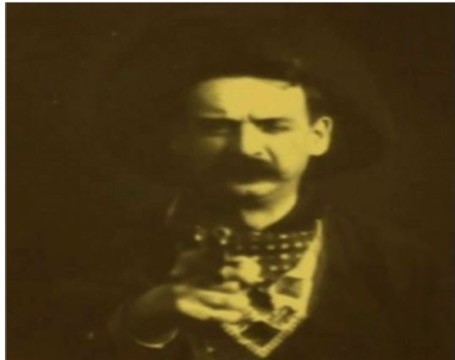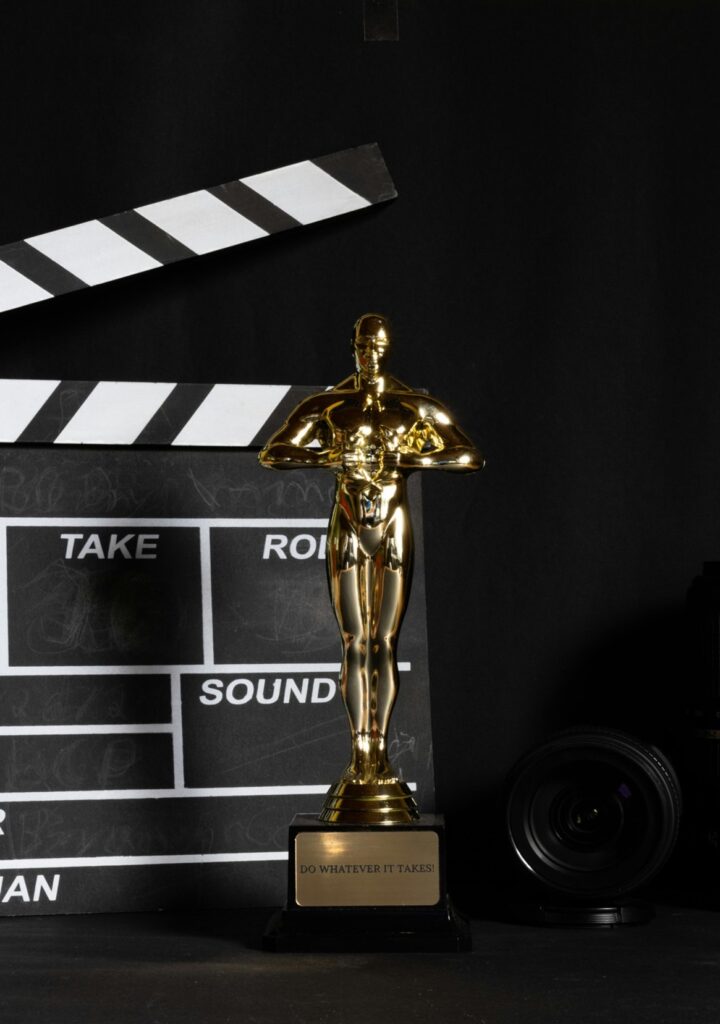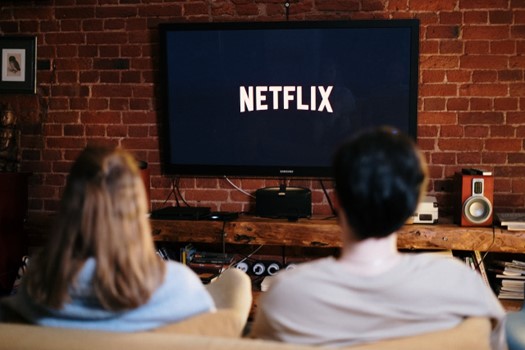“What I saw yesterday that was different. You lacked respect. There was no… connection. There was no beauty.” –Bodhi, Point Break, Alcon Entertainment, 2015
Did you hear about the guy who recently woke up at 3:30 a.m. and found himself locked in the movie theater? Fortunately, there was leftover popcorn in the machine, so he could have something to eat until someone came to prep the next day’s showings. He’s probably not the first to experience this, and the way things are going, he won’t be the last.
We respect the creative talents of directors like Nolan, Scorsese, Spielberg, Jackson and Tarantino, but we do wish they would respect the audience’s attention span and normal, everyday bodily functions.

Edwin Porter’s 1903 epic silent movie, The Great Train Robbery, was only 12 minutes in length,
and everything was crammed with real/imagined thrills using the latest in innovative film techniques including the scene with Barnes, the heartless gang leader, emptying his gun directly into the camera. Widely distributed, the film was a huge success because of its dynamic action and violence. It was so iconic that the US National Film Registry preserved it because of its “culturally, historically, or aesthetical significance.”
No, it’s not your imagination, movies are getting longer. It’s impossible to say how many films are produced each year around the world, but the unofficial scorecard (IMDb) puts last year’s total at 19,727. And yes, the volume and length have gone up thanks in no small part to technologies. AI will give it another shot in the arm that will make film production cheaper and easier to write, shoot, edit, and distribute.
Because of the recent writer/actor agreements, there may be some reduction in expenses/length, but the excess mindset is pretty firmly set in Hollywood, especially when it comes to the industry’s A-list directors. A-list producers/directors have become less interested in the paying public and more involved in perfecting their creative visions.
The first feature film, 1906’s The Story of the Kelly Gang, was 60 minutes in length, and that more or less became a movie’s benchmark. Back when feature films were produced on 16mm celluloid, the 16-inch reel had an approximate run time of 60–75 minutes. If you made a two-reeler, you had to have a break for the projectionist to swap reels (projectors were expensive, projectionists not so much).
That changed back in the early 2000s when the industry went digital and films began shipping to theaters in DCPs (digital content packages), and producers suddenly had unlimited storage capacity—and weren’t afraid to use it. Sure, there are a few power filmmakers—Tarantino, Nolan, Spielberg, Anderson—who insist on using film wherever possible, but there is often a firm budget cap. Even then, they feel it’s important to introduce the film’s “look and feel” when the movie is released.
There used to be an unwritten Hollywood rule that screenwriters stuck to that said a project was capped at 120 pages, resulting in a film that was about 90 minutes in length.
We’re not certain how many times we’ve watched Tarantino’s Pulp Fiction and enjoyed it right up to the end every time. But we still wonder why it took so long 2 hours 34 minutes to tell the story of two hitmen, a boxer, gangster and his wife, and two diner bandits. Maybe if he split the story into two films—two hitmen, gangster and wife in the first film, and boxer, two bandits in the sequel—it would have improved the studio’s, theaters’, and his take on the project. Okay, maybe not, but we might have stuck around for the end of the credits because we really needed a break. Despite that bodily weakness, we still like his stuff.
Nolan is… Nolan.Tenet was “interesting” because it’s about a guy fighting hard to save the entire world from international espionage, armed only with one word, “Tenet.” Crashing a 747 into an airport terminal “had to have” a real terminal and a real plane, according to Christopher Nolan. CGI would have looked as good and had less impact on the environment. It was nice he kept a lot of set construction on the payroll to produce a full-size airport terminal and then buy a used Boeing 747 just to smash into his fake/real terminal. Gone in 60—but it might have been a little less expensive (at least better for the environment) had he hired a few really great CGI specialists. But that was just a small part of his 2-hour 30-minute epic film, which we still can’t figure out.
At least it was shorter than his recent masterpiece, Oppenheimer, which took 3 hours to tell the story of some guy making a really big bomb that goes… boom!
We can hardly wait to see what his next epic project will be, especially since the rumor is he has insisted he’ll have to own it completely so he can 100% control the budget and length.—total creative freedom. Of course, when the project is larger than life and needs more time to tell the story, the budget goes up and so does the “value” of the above-the-line—producer, director, actors—costs (not including back-end residuals).
This year, the average length of the top 10 grossing films in the US was 2 hours 23 minutes—again, pushing theatergoers beyond their physical limits (okay, just us, but…).
We’re not certain exactly when producers started to become solely enraptured with themselves and less concerned with the audience. Ordinary people (ticket buyers and service subscribers) are incidental to their creative prowess, even though people have other things that are just as important to them, like eating, sleeping, loving, communicating.
The average time folks spend watching the average feature film has grown to between 75 to 210 minutes. That’s just fine with the awards folks (Academy and others) because they’ve laid down the rule that for a project to be classified as a feature film, it has to be more than 40 minutes in length, and the longer, the better. But your chance of winning an award is to have a 3 hour-plus film… higher-scoring projects are 100–120 minutes in length. The length of time involved must be important, since award events like the Oscars include an endless stream of winners who credit everyone possible for his/her career, so the coverage just goes on… and on.

It’s really all about them!
Only Sally Fields had it right when she famously said, “I can’t deny the fact that you like me.” And yes, there were those in the crowd who thought it was a little much. Unlike many A-listers at the Academy Awards, her speech was delightfully short.
Fortunately, the telecast only lasts 3 hours, as folks cut the winners off after their time limit—which must irk some because they and their work are totally more relevant.
As someone recently noted, films don’t have to be that long—Titanic, boat sinks; King Kong, big ape; Godzilla, mutant dinosaur; Green Book, travel diary; The King’s Speech, speech; Oppenheimer, bomb; Apocalypse Now Redux, we still lost.
If Hollywood really cared about the theaters they give lip service to, they’d put films “in the can” when they reach 2 hours.
That would give the theater owners a chance to squeeze in at least one more showing for 20–50 more tickets and side orders sold. It would also give them time to clean up the mess from the last group of snack/watch folks. While they’re at it, they could bring back the intermission, so people don’t have to risk bladder failure. Sitting through a film that’s 3–4 hours in length doesn’t need to be an endurance test.
Win, win, win.
Directors aren’t interested in your needs interrupting their masterpiece. A few European film houses decided folks needed a break (6–15 minutes) in Scorsese’s 206-minute Killers of the Flower Moon and added their own intermission. When one of his people heard about this thoughtless interruption, she said, “That’s a violation.” When we watched the film at home on our daughter’s Apple TV+ account, we paused it, did what we had to/wanted to do, and continued with the story right where we left off.
Scorsese justified the long run time, saying, “People say it’s 3 hours, but come on, you can sit in front of the TV and watch something for 5 hours.” Maybe he does, but, we don’t!
When someone commented to Cameron about the length of Avatar: The Way of Water (3 hours 12 minutes) needing a break, he said he didn’t mind if folks had to step out for a few minutes to answer the call of nature. His solution? “They can see the scene they missed when they come see it again.”
Studios and directors have to at least fake that they care about movie theaters and especially the people who buy the tickets and line their pockets. That’s probably why we like “made for TV” films as well as those that have been “edited for the screen.” Good editing and post-production folks do such an excellent job, we don’t miss what we missed.
We’re not one of those folks who gives a rat’s behind about Netflix, Amazon, Disney, or the others dumping a full season of a show on us all at once. Our binging is 2 hours, max! By that time, our butt is numb along with our brain. It’ll be there tomorrow evening, and if it isn’t, that’s life! (Don’t they realize that the average human attention span has decreased over the past two decades from 12 seconds to 8.25 seconds. Even goldfish have an attention span that is 1 second longer than yours.)
That’s probably one of the reasons TikTok has more than1.67 billion users and had more than 657 million downloads last year, while Netflix only had 165 million last year, and the average user spends 55.8 minutes per day. Take a hint from the folks who provide your revenue stream, and cut back… just a little.
Yeah, that’s why we stream nearly all our entertainment. If it ain’t there now, it will be soon.
And, as long as we’re bitchin’, what’s with the most important part of a film/show, the audio? We have this gorgeous (large) 4K OLED screen and added a Dolby Atmos surround system and surround sound. Despite the enhancements, the wife and I were constantly looking at each other at least twice during a show and saying, “what’d he/she say?” and shrug our shoulders.

Studios, directors, production folks, and streamers could do the home viewing public a service by going back to using ADR (automated dialogue replacement), which improves dialogue audibility. Yeah, it messes up immersion, which directors feel is so vital in carrying through the atmosphere of their project, but….
Since people realized that understanding the dialogue isn’t important, mere mortals have found a work-around. We solved the puzzle without buying hearing aids or isolating ourselves during the movie/show with headphones. We first turned on subtitles (which we needed anyway), since we enjoy foreign projects in their native tongue. It turns out subtitles are even good when watching projects in English. No matter if a film/show is produced in Canada, England, Australia… they seem to speak a funny form of English.
We also learned another trick to outwit the control freak director, which is to take advantage of the screen manufacturer’s dialogue mode. Yeah, we didn’t know it was there either, but it boosts the dialogue in the overall mix, so it gives us a chance to hear what folks are saying without being overpowered by the other sounds.
Thanks, Greg. Not sorry, Christopher, Martin, Quentin, James, Steven, and the rest of the creative producers.
We have to agree with Bodhi when he said, “There are a few things in life I don’t compromise on.”
Normal bodily functions are one of them. Getting the most entertainment possible from the films/shows we watch is another.
Maybe someday studios, directors and A-listers will figure out viewers are sorta, kinda important.